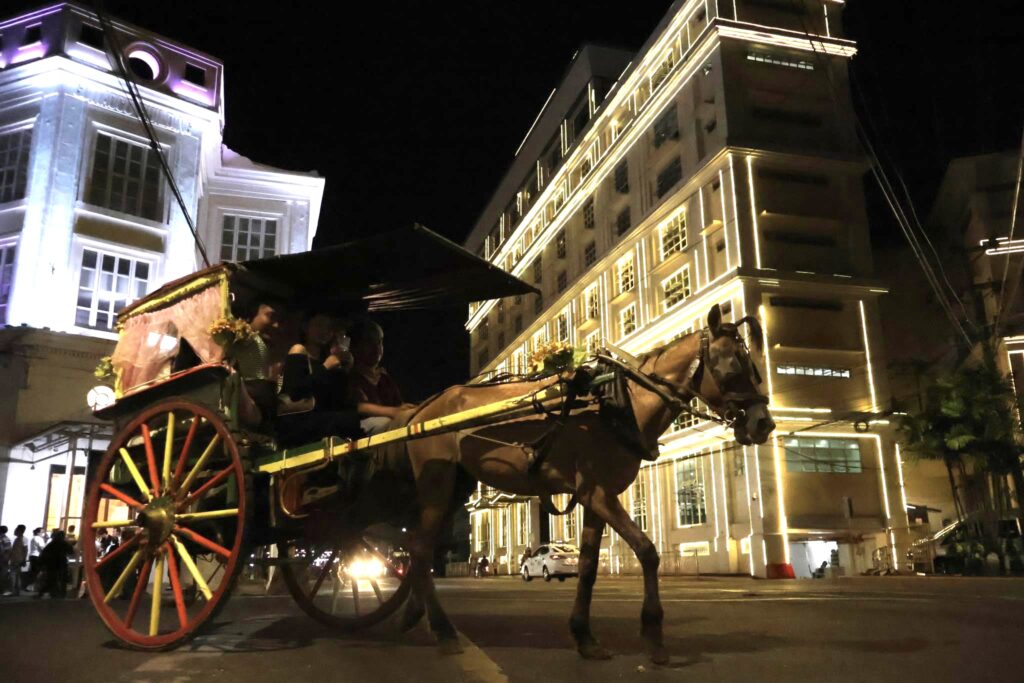
Locals and tourists alike explored the many heritage sites in Cebu during the Gabii sa Kabilin 2024 on Friday, May 10. | CDN Digital/ Christian Dave Cuzion
CEBU CITY, Philippines – The much-awaited Gabii sa Kabilin (GSK) 2024 offered participants of all ages an immersive experience of Cebu’s vibrant history, which has influenced the identity of its people over the years.
This year’s event, held on Friday, May 10, celebrated the theme “Beloved Bisaya.”
This theme commemorated the 350th death anniversary of Jesuit missionary Fr. Francisco Ignacio Alcina, who affectionately called the Visayans “my beloved Bisaya.”
A total of 22 heritage sites in the cities of Cebu City, Mandaue, Lapu-Lapu, and Talisay took part in the cultural tour this year.
These were classified into five categories:
- Bisayang Kaisog, highlighting the courage of Visayans
- Sino Bisaya, showcasing the connection of the Chinese to Visayans
- Mamugnoong Bisaya, featuring the Visayans’ creaitivity
- Natural Bisaya, showing the landscape and lifestyle of Visayans
- Pagtuong Bisaya, focusing on Visayan’s faith
The GSK offered a total of six bus routes that guests could go on to explore the sites in Cebu City, Talisay, Mandaue, and Lapu-Lapu.
Another choice was the walking tour and tartanilla ride through downtown Cebu City.
After the official opening of Gabii sa Kabilin 2024, everyone dispersed to start their night of cultural celebration.
READ: Gabii sa Kabilin 2024: Bringing generations together to rediscover Cebu’s heritage
To reminisce about this experience, let CDN Digital guide you through a tour of Gabii sa Kabilin 2024’s walking tour.
Casa Gorordo Museum
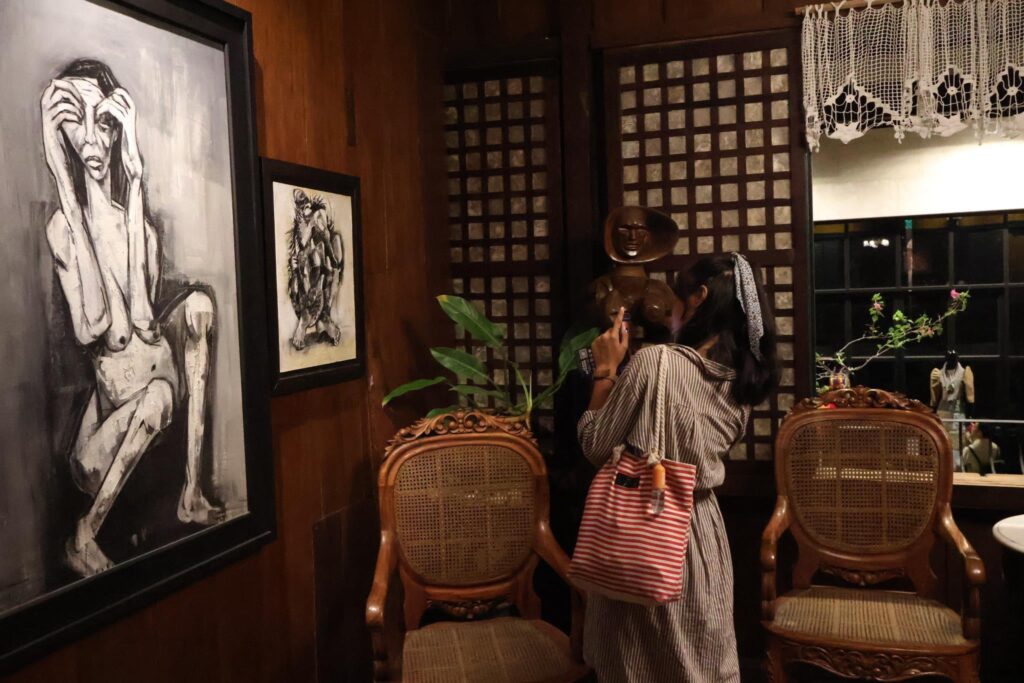
A participant looks around the Casa Gorordo Museum to learn more about the history of Cebu and its people. | CDN Digital/ Christian Dave Cuzion
The first stop on the walking tour and tartanilla route was the Casa Gorordo Museum located at 35 Eduardo Aboitiz Street, Tinago in Cebu City.
The Casa Gorordo Museum is a house-turned-museum built by Alejandro Reynes y Rosales, which housed four generations of the Gorordo family.
Among these is Juan Gorordo, the first Filipino Bishop of Cebu.
Participants of the cultural tour on Friday were given the opportunity to enjoy the special exhibit entitled “Reminders of the Lives Past: Parian in the 1600s.”
Meanwhile, kids had fun participating in a variety of activities at the Kid’s corner set up at the courtyard of the museum.
Kabilin Center
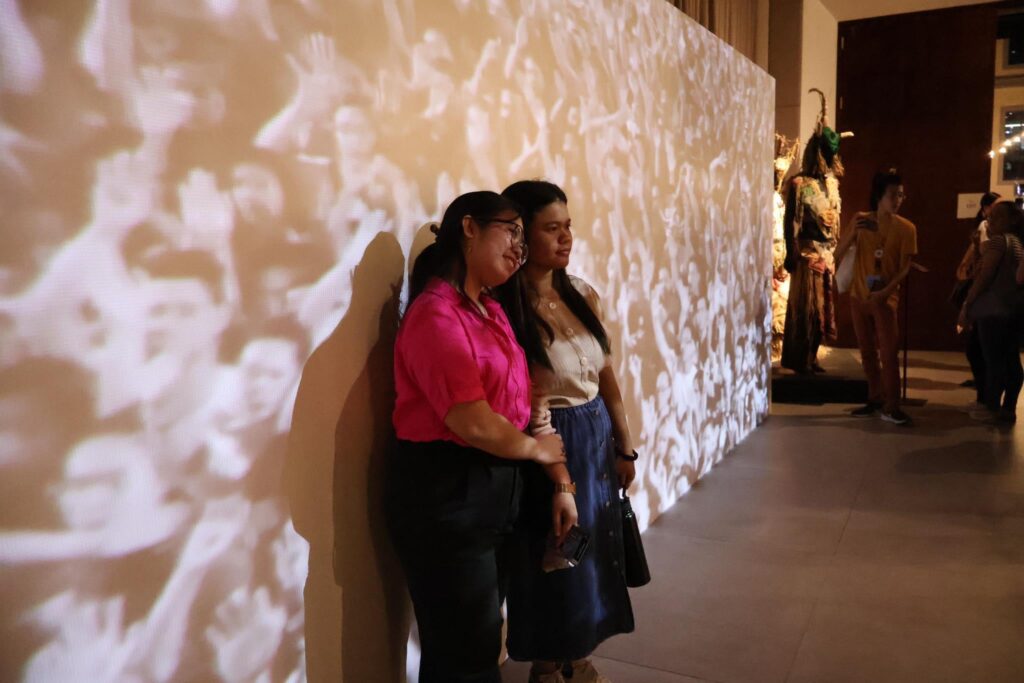
Guests take photos at tha Kabilin Center as a remembrance of their visit. | CDN Digital/ Christian Dave Cuzion
Right next to the Casa Gorordo Museum was the second stop – the Kabilin Center, known as the cultural hub for artistic experiences in Cebu.
For this year’s Gabii sa Kabilin, the center featured clothes inspired by garments worn by people of the past.
The temporary exhibit, which showcased faith, art, and fashion, was entitled “Saulog: Encounter, Pilgrimage and Transformation.”
It featured works by award-winning artist Steve de Leon.
On normal days, the entrance to the Kabilin Center is P150.
Museo Parian sa Sugbo- 1730 Jesuit House

A young boy takes the time to read the descriptions of artifacts at the Jesuit House. | CDN Digital/ Christian Dave Cuzion
The third stop was located along the Zulueta Street in Barangay Tinago, Cebu City.
As participants entered the Museo Parian sa Sugbo – 1730 or the Jesuit House, they were treated to an experience of what Cebu was like in the 18th century.
The Jesuit House is an 18th-century architectural marvel that fuses Filipino, Chinese, Spanish and American cultural designs and techniques.
Many years ago, it was once used as a base of operations by the Jesuit missionaries.
Now, it holds relics, furniture, and memorabilia from that time in history.
Furthermore, a section of the house features an exhibit highlighting the Dioramas of Life of San Pedro Calungsod.
READ: Celebrating Cebuano heritage, culture
Entrance to the Jesuit House is P100 for adults and P50 for students.
As a special treat, guests were given free ice cream at the exit of the house.
Jose Rizal Museum at the University of Southern Philippines Foundation (USPF)
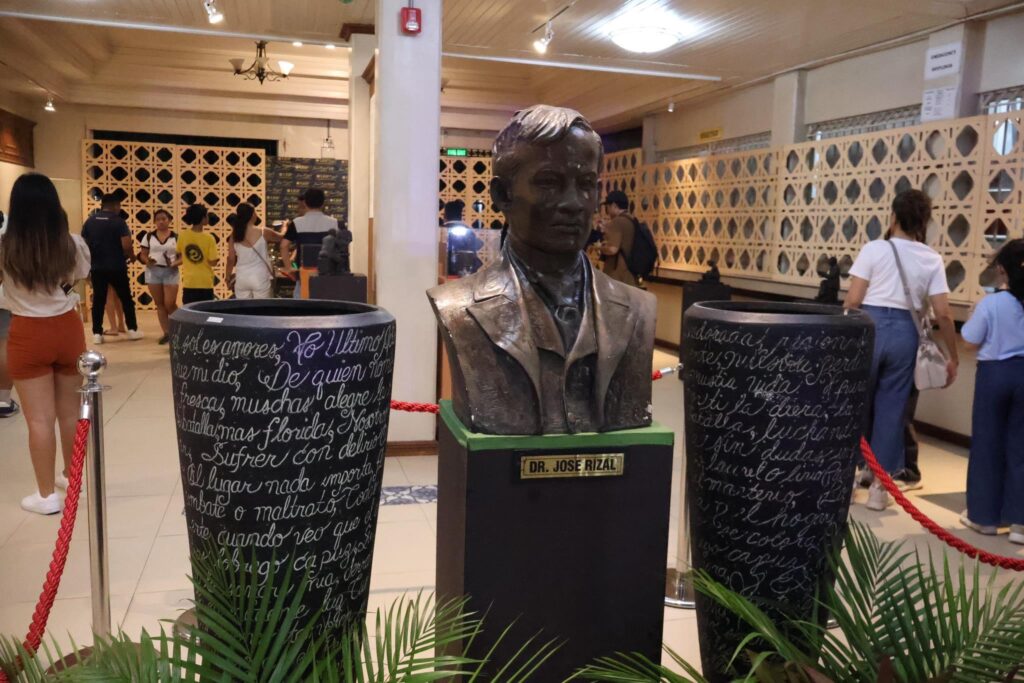
The Jose Rizal Museum at the University of Southern Philippines Foundation (USPF) was the fourth stop of the walking tour. | CDN Digital/ Christian Dave Cuzion
The next destination on the route was a museum dedicated to honor the Philippine national hero.
The Jose Rizal Museum at the University of Southern Philippines Foundation (USPF) can be found along Mabini Street.
One of the programs of the museum for the night were musical performances by some college students and the special guest, legendary Cebuano singer Max Surban.
Inside the cozy museum, guests marveled at Rizal’s works, which hold the special significance of igniting the flames of nationalism among Filipinos in the past.
Additionally, guests were able to enjoy other cultural performances, impromptu speeches, and lessons about the history of coffee in Cebu.
Archdiocese Museum of Cebu
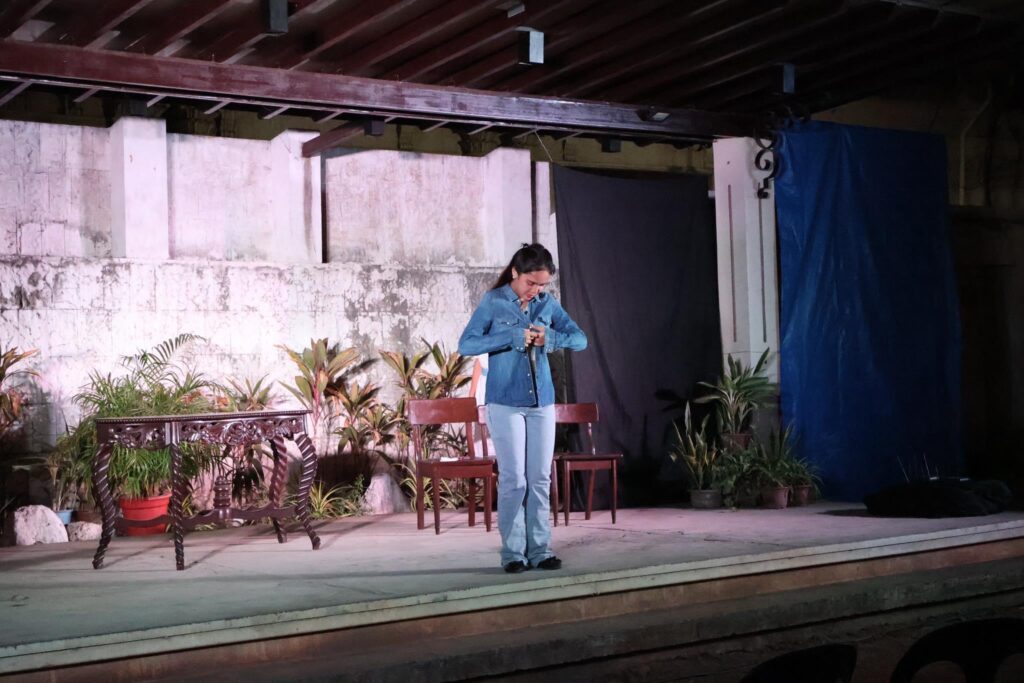
Theater actors perform a special play about stories of faith at the Archdiocese Museum of Cebu. | CDN Digital/ Christian Dave Cuzion
After enjoying coffee at the university, participants continued on their path to the fifth stop – the Archdiocese Museum of Cebu.
Inside the museum was an exhibit on the Life of San Pedro Calungsod, as well as collections of material worship.
Moreover, members of the Teatro De San Pedro Calungsod showed a special theatrical performance called the “Dula sa Pagtuo.”
The three acts of the play were entitled “Wedding Garment,” “Sila nga mitaliwan na,” and “Ringtone.”
Basilica del Minore del Santo Niño Museum
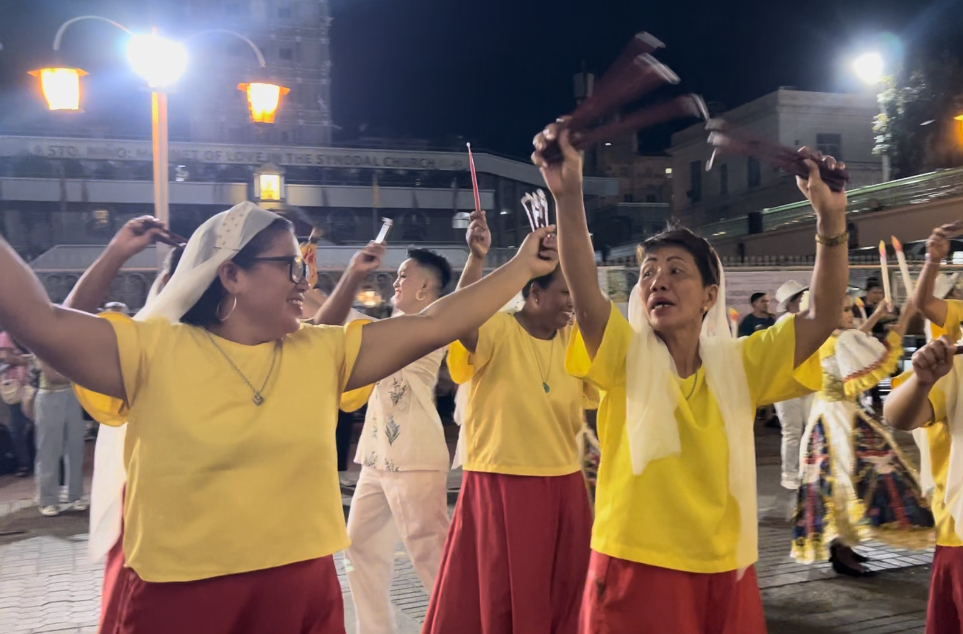
Candle vendors known as “tag-sinug” dance together with costumed performers at the Basilica del Minore del Santo Niño. | CDN Digital/ Christian Dave Cuzion
Moving on to the sixth spot, guests arrived at the Basilica del Minore del Santo Niño Museum located at the Osmeña Boulevard Corner P. Burgos street.
The church was built back in 1565 in honor of the then oldest religious icon in the Philippines, Santo Niño de Cebu.
The museum, containing various religious artifacts, was made accessible to the public in 1965.
For Gabii sa Kabilin, a special exhibit of an old Bisaya dictionary was set up at the museum.
Moreover, candle vendors locally known as “tig-sinug” performed a dance with costumed performers at the courtyard.
Bank of the Philippine Islands (BPI) Museum
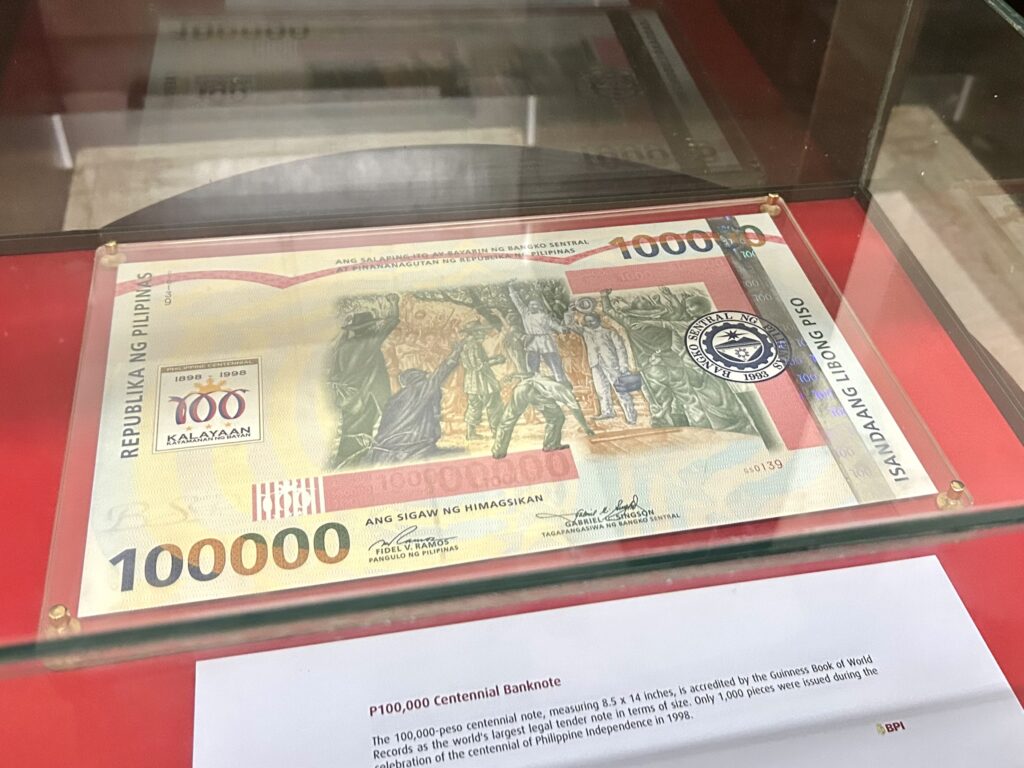
The P100,000 Centennial Banknote is stored at the Bank of the Philippine Islands (BPI) Museum in Cebu City. | CDN Digital/ Emmariel Ares
Right next to the Basilica was the first museum bank in the country and the third oldest branch of the Bank of the Philippine Islands (BPI).
GSK participants lined up at the entrance for a sneak peak at the various collections inclduding coins, bills, vintage vaults, automated machines, and more.
Among the displays were the first bank notes printed in the country, the four-denomination Pesos Fuertes (Strong Pesos) banknotes.
Inside a special room was the P100,000 Centennial Banknote, measuring 8.5 x 14 inches.
The bank note is recognized by the Guinness Book of World Records as the world’s largest legal tender note in terms of size.
Plaza Sugbo
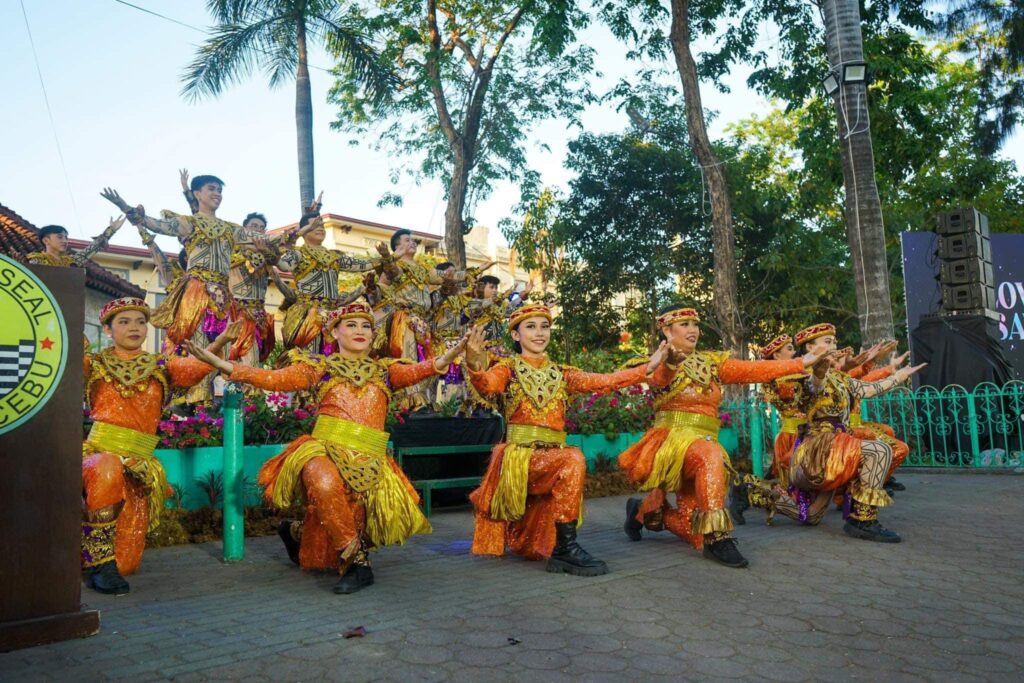
Local dancers showed a lively performance during the opening of the cultural tour at the Plaza Sugbo. | CDN Digital
As the night progressed, the participants’ enthusiasm remained as they headed to the 8th stop – the well-known Plaza Sugbo.
The plaza is located between the Cebu City Hall and the Basilica Minore del Santo Niño complex.
Before the start of the tour, a lively opening program was held at the plaza. Throughout the night, dance presentations were shown at the plaza while guests roamed around.
At this stop, guests were also able to look around the famous heritage landmark, the Magellan’s Cross.
Sugbu Chinese Heritage Museum
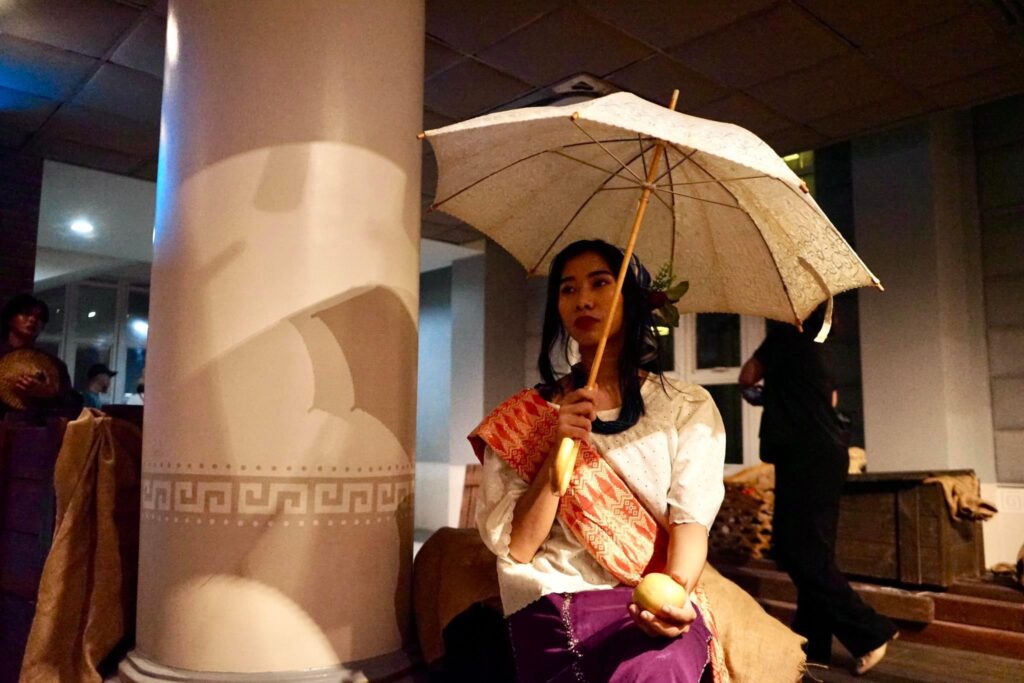
One of the “frozen actors” acting like statues at the Sugbu Chinese Heritage Museum. | CDN Digital/ Gerard Jamora
The 8th stop on the route was the first Chinese museum of its kind in Visayas and Mindanao, the Sugbu Chinese Heritage Museum.
The museum is located at M.C. Briones corner P Burgos Street.
It offered a new experience for the GSK participants as they explored an exhibition showing the Cebuano-Chinese culture.
Inside, there were heritage pieces and heirlooms showing the collaboration between Filipino and Chinese people.
Also, guests watched frozen actors perform a show about the life of Don Pedro Gotiaoco.
To move to the next destination, guests either walked or went onboard “tartanillas” glammed up with colorful lights.
Fort San Pedro
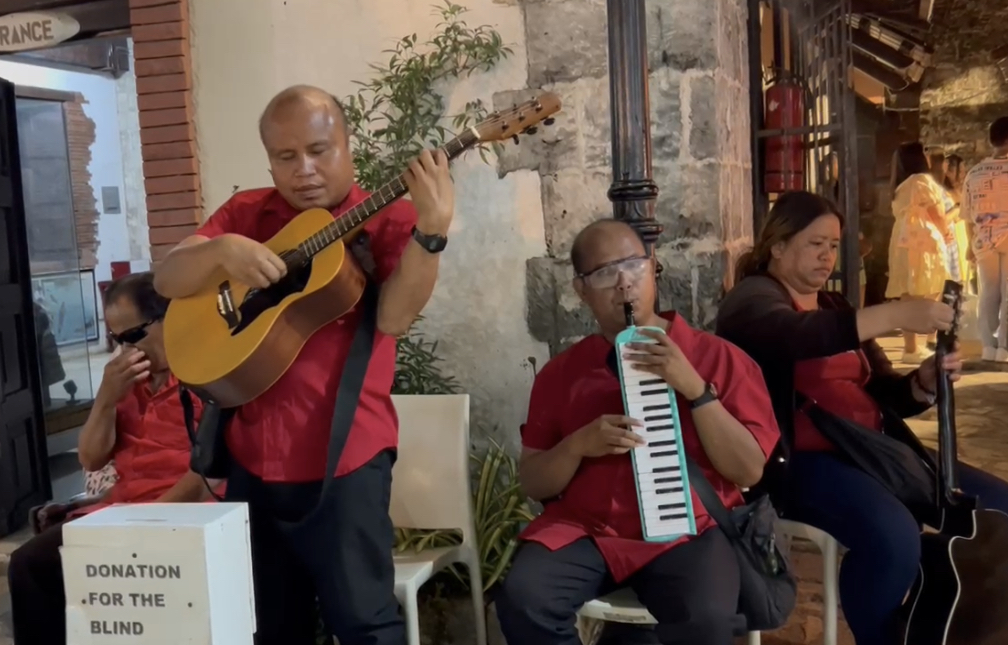
Guests are welcomed at the Fort San Pedro with a serenade by the Cebu Blind Acoustics. | CDN Digital/ Christian Dave Cuizon
Next on the route was Fort San Pedro, the oldest tri-bastion fort in the country.
Guests were welcomed on Friday night at the Fort San Pedro with a serenade by the Cebu Blind Acoustics.
They were then able to roam around the military defense structure that was built on May 8, 1565.
Guests also explored the museum which housed Spanish documents, artifacts, sculptures, painting, and weaponry.
National Museum

Guests roamed around the vast halls of the National Museum during the Gabii sa Kabilin 2024. | CDN Digital/ Gerard Jamora
Last but definitely not least on the walking tour was the National Museum of the Philippines – Cebu, located in the historic Plaza Independencia.
After being thoroughly checked at the entrance, guests took their time to roam around the two floors of the museum that were open on Friday.
The first floor contains exhibitions highlighting Cebu’s geology, maritime traditions, and archaeological treasures.
Meanwhile, the second floor house various paintings and artworks that are relevant to the history of Cebu.
While there are those who opted to walk, other participants went onboard buses to explore farther heritage sites on Friday night.
The first bus route went around Cebu City and visited the Fort San Pedro, University of San Carlos, Cebu Normal University, and the Cebu City Museum and Rizal Public Library.
Those on the second bus route visited the Fort San Pedro, Office of the City Mayor at the Cebu City Hall, University of San Jose-Recoletos, and the Fo Guang Shan Chu Un Temple.
Meanwhile, the third bus route went to Fort San Pedro, University of the Philippines, St. Theresa’s College, and the Palm Grass the Cebu Heritage Hotel.
Participants who chose the Mandaue route got to visit the National Museum and the Mandaue City Presidencia.
Those who headed to Lapu-Lapu City, on the other hand, went around the National Museum, Mandaue City Presidencia, and the Liberty Shrine.
The alternative route to Talisay allowed participants to visit Fort San Pedro, the Heritage of Faith Museum, and Museo de Talisay.
In addition to the tours, locals also joined the Heritage Hunt during Gabii sa Kabilin 2024.
From 6 p.m. to midnight, participants explored these sites, reflecting on the past era that shaped Cebu into its present form. /clorenciana
